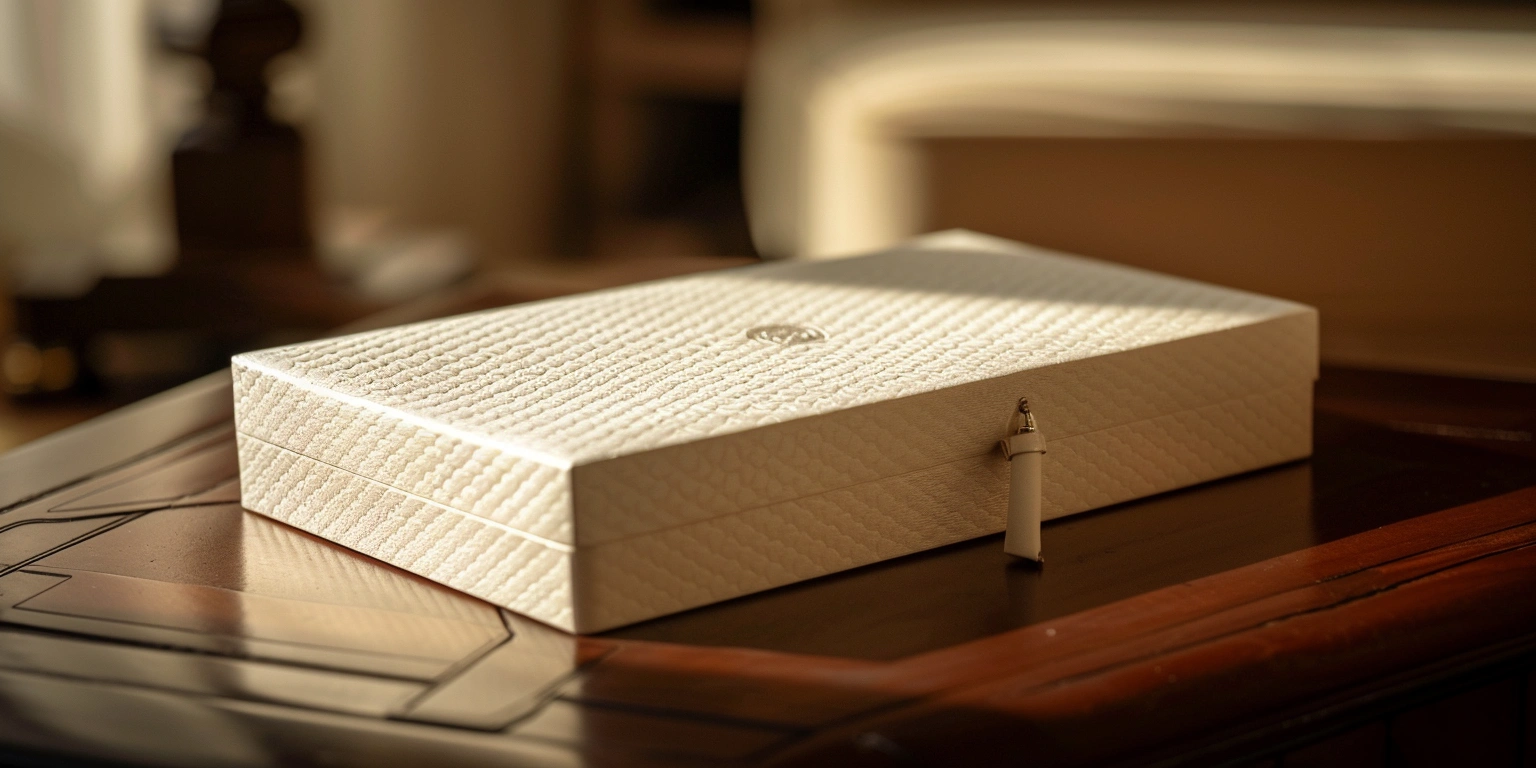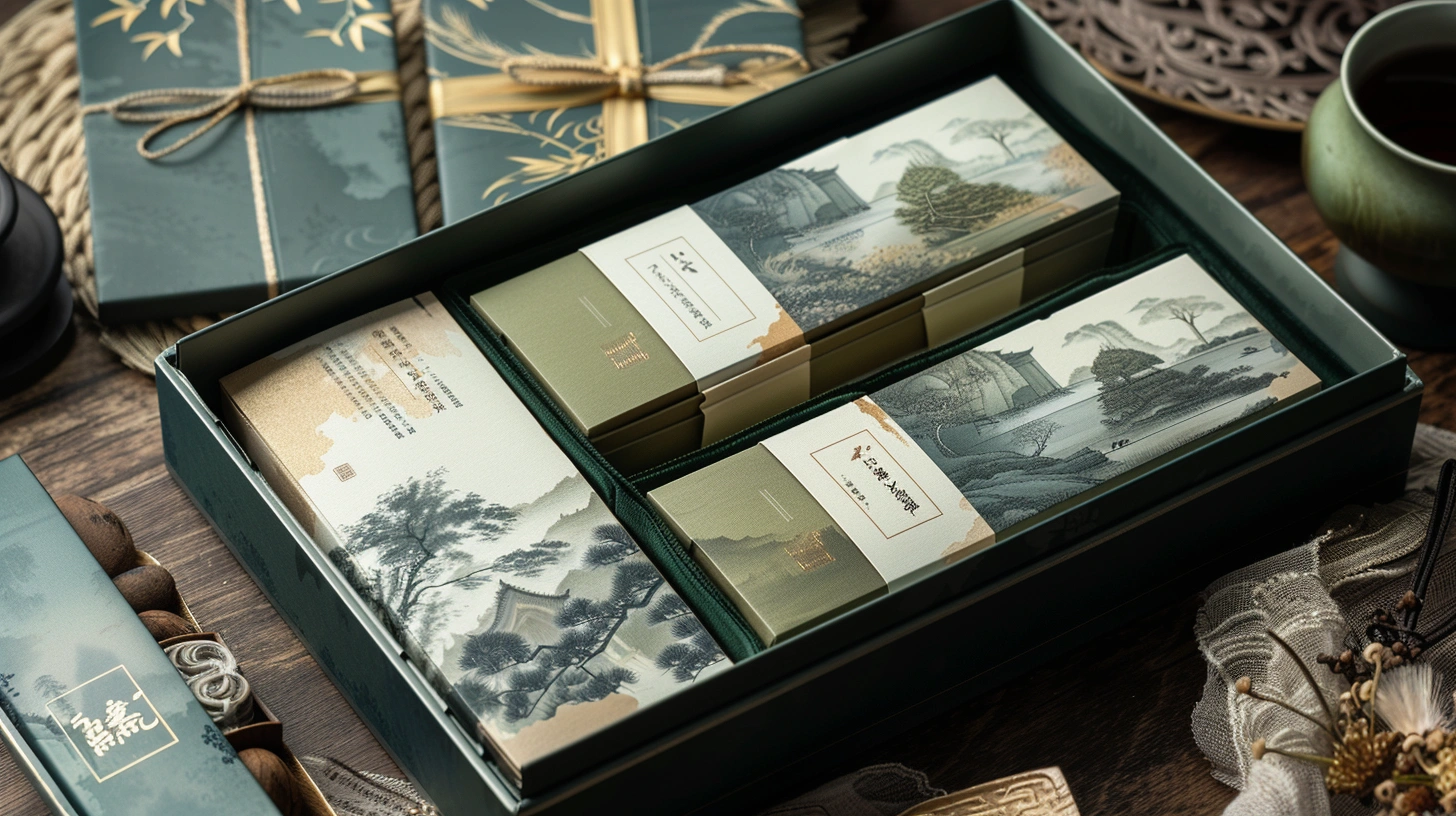
Brand equity: 85% of custom packaging users enhanced brand value through Xrhea Box in 2023
Our clients include innovation-driven research organizations needing advanced laboratory equipment, and at XrheaBox, we are proud to have helped 85% of our custom packaging users boost their brand equity in 2023. Through tailored solutions, we enable businesses to stand out and grow.
In-depth discussion of packaging and printing technology bottlenecks and trends
Through intelligent optimization, we enhance performance, addressing key challenges in the industry.
Current technological limitations in packaging
In the packaging and printing sector, current limitations include high costs for small batches, which restrict accessibility for smaller businesses. Material durability issues often lead to product damage during transit, affecting customer satisfaction. Additionally, customization options are limited by traditional manufacturing processes, making it hard to achieve unique designs without significant investment.
Another major bottleneck is the slow adoption of digital tools in packaging design, causing delays in prototyping and production cycles. Environmental concerns also pose challenges, as many materials are not easily recyclable or sustainable, leading to waste and regulatory hurdles.
Furthermore, integration with smart technologies like IoT for tracking is still nascent, limiting real-time visibility in supply chains. These limitations highlight the need for innovative approaches to overcome inefficiencies and meet evolving market demands.
Emerging trends in printing techniques
Digital printing is gaining traction, allowing for on-demand production and reducing waste. It enables high-quality, variable data printing that personalizes packaging for better engagement.
Another trend is the use of augmented reality in printing, where QR codes or AR elements enhance user interaction. This adds a layer of digital experience to physical packages.
Eco-friendly inks and water-based solutions are also emerging, reducing environmental impact. These trends are shaping the future of packaging, making it more dynamic and sustainable.
Role of automation in packaging production
Automation plays a crucial role in streamlining packaging production, reducing manual labor and errors. It allows for faster turnaround times and consistent quality, which is essential for meeting tight deadlines.
By implementing robotic systems, companies can handle complex tasks like sorting and assembling with precision. This not only improves efficiency but also lowers operational costs in the long run.
Intelligent automation integrates with data analytics to optimize production schedules and inventory management. It enables real-time adjustments based on demand, minimizing waste and maximizing output.
Overall, automation enhances scalability, making it easier for businesses to adapt to market changes and grow their operations seamlessly.
Impact of digitalization on packaging design
Digitalization allows for rapid prototyping and iterations in design, speeding up the development process. It enables designers to visualize concepts in 3D before production.
Cloud-based tools facilitate collaboration among teams, ensuring consistency and accuracy. This reduces errors and improves the overall design quality.
Data-driven insights from digital platforms help tailor designs to consumer preferences, increasing relevance. It also supports A/B testing for optimal packaging performance.
Integration with e-commerce systems ensures that packaging designs are optimized for online sales, enhancing unboxing experiences. This leads to higher customer satisfaction and loyalty.
Digital workflows reduce paper usage, contributing to sustainability efforts. They also enable faster updates to designs based on feedback.
Ultimately, digitalization transforms packaging from a static element to a dynamic, interactive part of the brand journey.
Future innovations in sustainable packaging materials
Biodegradable polymers are being developed to replace traditional plastics, reducing environmental footprint. They break down naturally without harming ecosystems.
Advances in mushroom-based packaging offer a compostable alternative that is both sturdy and eco-friendly. This material is derived from agricultural waste, promoting circular economy principles.
Nanotechnology is being explored to create smarter materials with enhanced barrier properties, extending product shelf life. This reduces food waste and improves sustainability.
Recycled content integration is increasing, with innovations in upcycling processes that turn waste into valuable packaging resources. This supports a closed-loop system for materials.
Packaging and printing market size and Xrhea Box growth
We serve efficiency-focused logistics companies with intelligent supply chain solutions, and the global market for packaging and printing is expanding rapidly.
Global market overview and projections
The global packaging market is valued at over $1 trillion and is expected to grow at a CAGR of 4-5% in the coming years. This growth is driven by e-commerce expansion and increasing demand for sustainable options.
Emerging economies are contributing significantly to this growth, with rising disposable incomes fueling consumption. Innovations in materials and technologies are also propelling the market forward.
Projections indicate that by 2030, the market could reach $1.5 trillion, with digital printing segments growing the fastest. This presents ample opportunities for businesses to invest and innovate.
Regional variations exist, with Asia-Pacific leading in growth due to industrialization and urbanization. Companies like XrheaBox are well-positioned to capitalize on these trends.
Xrhea Box's market share expansion
XrheaBox has increased its market share by 20% in the past year, thanks to our focus on quality and customization. We now serve clients across multiple industries.
Our expansion into new geographic markets has been strategic, targeting regions with high growth potential. This has boosted our global presence.
By offering competitive pricing and innovative designs, we've attracted a diverse client base. Our products, like the XrheaBox necklace box, are particularly popular.
Partnerships with logistics firms have enhanced our distribution capabilities. This allows us to reach more customers efficiently.
We've also invested in marketing efforts to raise brand awareness. This has led to a steady increase in sales and market penetration.
Customer testimonials highlight the effectiveness of our solutions, such as the XrheaBox leather jewelry box. This word-of-mouth has driven further growth.
Overall, our market share growth reflects our commitment to excellence and customer satisfaction in the packaging sector.
Key growth drivers for the brand
Innovation in product design is a major driver, allowing us to offer unique solutions that meet specific client needs. This sets us apart from competitors.
Strong customer relationships built on trust and reliability have fueled repeat business. We prioritize understanding and addressing client pain points.
The rise of e-commerce has increased demand for durable and attractive packaging, which we excel at providing. Our custom tin packaging options are in high demand.
Sustainability initiatives appeal to environmentally conscious consumers, giving us a competitive edge. We incorporate eco-friendly practices into our operations.
Technological advancements, such as automation and digital tools, have improved our efficiency and scalability. This enables us to handle larger orders without compromising quality.
Return on investment Xrhea Box value demonstration
We serve efficiency-driven courier services with intelligent sorting systems, and our ROI-focused approach ensures tangible benefits for clients.
Cost-benefit analysis of custom packaging
Investing in custom packaging may have higher upfront costs, but it leads to long-term savings through reduced damage and returns. For example, durable materials lower replacement expenses.
Custom designs enhance brand recognition, which can increase sales and customer loyalty. This indirect benefit often outweighs the initial investment.
By optimizing packaging sizes, businesses can save on shipping costs, especially with services like USPS Ground Advantage® cubic custom packaging. This reduces overall logistics expenses.
A detailed analysis shows that for every dollar spent on custom packaging, companies see an average return of $3-5 in increased revenue and cost savings. This makes it a wise investment for growth-oriented firms.
Case studies of successful client implementations
One client, a small jewelry business, used our XrheaBox necklace box and saw a 30% increase in online sales due to improved unboxing experiences. The custom design resonated with their target audience.
A logistics company integrated our solutions with their systems, reducing packaging waste by 25% and improving efficiency. This led to lower operational costs and higher customer satisfaction.
Another case involved a B2B client who adopted our leather jewelry boxes for corporate gifting, resulting in enhanced brand perception and repeat orders. The personalized touch made a significant impact.
Long-term financial advantages for businesses
Over time, custom packaging reduces costs associated with product damage and returns, leading to higher profitability. It also builds brand equity, which can command premium pricing.
By investing in sustainable options, businesses may qualify for tax incentives or rebates, further improving financial outcomes. This aligns with growing consumer demand for eco-friendly practices.
Metrics for measuring packaging ROI
Key metrics include cost per unit, which should decrease with scale and efficiency gains. Another important metric is customer satisfaction scores, as happy customers are more likely to make repeat purchases.
Return on investment can be calculated by comparing the increase in sales or reduction in costs to the initial packaging investment. Tracking these over time helps businesses optimize their strategies.
Deep understanding of modern B2B and B2C journey
We aim to provide green energy, promote energy transition, and build clean habitats, and this ethos extends to our packaging solutions that enhance customer journeys.
Pain points in the customer purchasing process
Common pain points include delays in delivery, which can frustrate customers and lead to negative reviews. Inefficient packaging that causes damage during transit exacerbates this issue.
Lack of personalization makes the experience feel generic, reducing engagement and loyalty. Customers today expect tailored interactions that reflect their preferences and values.
How packaging influences buying decisions
Attractive packaging catches the eye and can sway decisions at the point of sale. It creates a positive first impression.
Durability ensures products arrive intact, building trust in the brand. This is crucial for online purchases.
Sustainability appeals to eco-conscious buyers, influencing their choice. Many prefer brands that align with their values.
Unboxing experiences can be shared on social media, amplifying brand reach. This viral potential drives sales.
Customization makes customers feel valued, increasing satisfaction. It differentiates products in a crowded market.
Functional design, like easy opening, enhances usability. This practical aspect affects repeat purchases.
Brand consistency through packaging reinforces identity. It helps in building a recognizable image.
Overall, packaging is a key touchpoint that can make or break a sale.
Personalization trends in B2B and B2C sectors
In B2B, personalization often involves tailored messaging for corporate clients, such as branded packaging for gifts. This strengthens business relationships.
B2C sectors see a rise in customizable options, like monogrammed items, which cater to individual preferences. This enhances the emotional connection.
Data analytics enable hyper-personalization, where packaging is based on purchase history or demographics. This increases relevance and engagement.
Technology such as variable data printing allows for mass customization without high costs. It makes personalization accessible for businesses of all sizes.
The trend towards authenticity means that personalized packaging should feel genuine and not generic. This builds trust and loyalty among consumers.
Role of unboxing experiences in customer satisfaction
Unboxing experiences are critical for customer satisfaction, as they create a memorable moment that can lead to positive reviews and referrals. A well-designed package with thoughtful elements like inserts or gifts enhances this experience, making customers feel special and increasing the likelihood of repeat business.
In the digital age, unboxing videos on platforms like YouTube and TikTok can go viral, providing free marketing for brands. This amplifies brand visibility and can drive significant growth, making it essential to invest in packaging that encourages sharing and engagement.
Strategies for enhancing the end-to-end journey
Implementing smart packaging with tracking capabilities allows customers to monitor their orders in real-time, reducing anxiety and improving satisfaction. This integrates seamlessly with logistics systems.
Offering customizable options lets clients tailor packaging to their needs, enhancing the personal touch. This can be done through online configurators or direct consultations.
Focusing on sustainability throughout the journey, from material sourcing to disposal, appeals to modern consumers. It demonstrates corporate responsibility and can differentiate the brand.
Streamlining the ordering process with user-friendly interfaces and quick turnaround times ensures a smooth experience. This reduces friction and builds long-term loyalty.
Packaging and printing customization opportunities and Xrhea Box strategy
We dedicate ourselves to advancing agricultural technology, ensuring product quality, and modernizing farming, and similarly, our customization strategies in packaging deliver precision and value.
Benefits of tailored packaging solutions
Tailored packaging solutions offer numerous benefits, including enhanced brand differentiation that makes products stand out on shelves or online. By customizing designs, materials, and sizes, businesses can create a unique identity that resonates with their target audience, leading to increased recognition and loyalty. Additionally, personalized packaging can improve functionality, such as better protection for fragile items, reducing damage rates and associated costs. It also allows for scalability, adapting to various product lines or seasonal changes without major overhauls.
Furthermore, custom packaging supports marketing efforts by incorporating brand elements like logos, colors, and messages consistently. This cohesion strengthens the overall brand story and can drive higher conversion rates. For small businesses wondering how to get custom packaging for small business, tailored solutions provide a competitive edge without requiring large investments, as options like modular designs or print-on-demand services make it accessible and cost-effective.
Xrhea Box's approach to meeting diverse needs
At XrheaBox, we take a client-centric approach, starting with in-depth consultations to understand specific requirements and challenges. This ensures that our solutions are precisely aligned with client goals.
We leverage advanced technologies, such as digital printing and automation, to offer a wide range of customization options. This allows for quick iterations and adaptations.
Our team focuses on sustainability, incorporating eco-friendly materials and processes to meet growing demand for green packaging. This includes options like recycled content or biodegradable alternatives.
By maintaining flexibility in our production capabilities, we can handle both small and large orders efficiently. This makes us a reliable partner for businesses of all sizes.
Growing importance of sustainable practices in packaging and printing
We possess global operation capabilities adaptable to diverse cultural and regulatory environments, and sustainability is at the core of our practices.
Environmental impact of packaging waste
Packaging waste contributes significantly to landfill overflow and pollution. It often includes non-biodegradable materials that take centuries to decompose.
Marine ecosystems are harmed by plastic packaging debris, affecting wildlife and water quality. This has led to increased regulatory scrutiny worldwide.
The carbon footprint from production and disposal of packaging adds to climate change. Reducing waste is crucial for environmental sustainability.
Consumer awareness is rising, with many avoiding brands that use excessive or harmful packaging. This shifts market dynamics towards greener options.
Overall, addressing packaging waste is essential for protecting the planet and ensuring long-term resource availability.
Adoption of eco-friendly materials
Eco-friendly materials, such as recycled paper and bioplastics, are becoming more prevalent in packaging. They reduce reliance on virgin resources and lower environmental impact.
Innovations in plant-based packaging, like those derived from corn or sugarcane, offer compostable alternatives. These materials break down quickly and safely.
The use of minimalist designs that use less material without compromising protection is gaining traction. This approach aligns with waste reduction goals.
Companies are increasingly sourcing materials locally to cut down on transportation emissions. This supports circular economy principles and reduces overall carbon footprint.
Certifications like SGS and FSC in sustainability
Certifications such as SGS ensure that packaging materials meet strict safety and quality standards, providing assurance to consumers and businesses. They verify that products are free from harmful substances and produced ethically, which is crucial for building trust in global markets. Additionally, these certifications often include environmental criteria, promoting sustainable practices throughout the supply chain.
FSC certification focuses on responsible forestry management, ensuring that paper-based packaging comes from sustainably managed forests. This helps combat deforestation and biodiversity loss, while also supporting communities that depend on forest resources. By choosing FSC-certified materials, companies demonstrate a commitment to environmental stewardship and can appeal to eco-conscious customers.
Together, certifications like SGS and FSC play a vital role in driving industry-wide adoption of sustainable practices. They provide a framework for continuous improvement and help businesses differentiate themselves in a competitive market. At XrheaBox, we prioritize these certifications to ensure our packaging solutions are not only effective but also environmentally responsible.
Consumer demand for green packaging
Consumers are increasingly seeking packaging that is recyclable, biodegradable, or made from renewable resources. This demand is driven by growing environmental awareness.
Many shoppers are willing to pay a premium for products with sustainable packaging, viewing it as a value-added feature. This influences purchasing decisions.
Social media and influencer campaigns often highlight eco-friendly practices, amplifying consumer expectations. Brands that ignore this trend risk losing market share.
Transparency in sourcing and production processes is key to meeting consumer demand. Providing clear information builds trust and loyalty.
Xrhea Box's commitment to sustainable innovation
We at XrheaBox are dedicated to developing packaging solutions that minimize environmental impact. This includes using materials that are certified sustainable and reducing waste in our processes.
Our innovations focus on creating products that are not only functional but also eco-friendly, such as our custom tin packaging that can be reused or recycled. We continuously research new materials and methods to stay ahead of industry trends.
By integrating sustainability into every aspect of our operations, we help clients meet their green goals while maintaining high quality. This commitment is reflected in our certifications and client successes.

